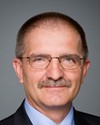We have spent an enormous amount of time together with health professionals and with first nations leadership just discussing the concept of e-health and telemedicine in many of those sessions. I think we're at a tipping point now where people actually understand the benefit: our health colleagues were resisting change—and change is not an easy thing—so it was not only with first nations, but internally within the federal bureaucracy. Our own program people who are busy did not embrace the concept of technology, but that attitude has changed.
That was probably the number one challenge, the capacity to understand what e-health was. It's a complex term. We throw around different terms all the time: m-health, mobile health. It keeps changing. The technology keeps advancing, so it's hard to keep up sometimes with leadership. But I think first nations health managers have taken the leadership on this and are not asking, why e-health, but when e-health.



